Such long-distance motorcycling has in recent years become a sophisticated sport-ennobled not only by mechanized improvements, but also by engineering finesse. One of the most essential yet very efficient modifications? Your position of the handlebars.
It is fine to set your handlebar position so that you are comfortable in your bike seat but the position of the handlebar is also about control, stamina and even avoiding injury. Riders who take their tours tend to cover thousands of miles in varying terrain.
Those are all great when a little off, but the differences can accumulate over time, causing wrist pain, lower back discomfort, and impaired handling when going around a twist or changing weather conditionalities.
Recommended Handlebar Specs for Touring Comfort

| Rider Type | Handlebar Rise | Pullback | Width | Recommended Material | Adjustment Range |
|---|---|---|---|---|---|
| Adventure Touring | 2–4 inches | 3–5 inches | 32–34 inches | Aluminum Alloy | High (Rotatable risers) |
| Sport Touring | 1–2 inches | 1–3 inches | 28–30 inches | Steel | Medium |
| Cruiser Touring | 4–6 inches | 5–7 inches | 34–36 inches | Chromoly Steel | Low (Fixed bar clamps) |
🔗 Reference: Motorcycle Ergonomics Guide – Cycle World
Why Handlebar Positioning Matters More Than You Think
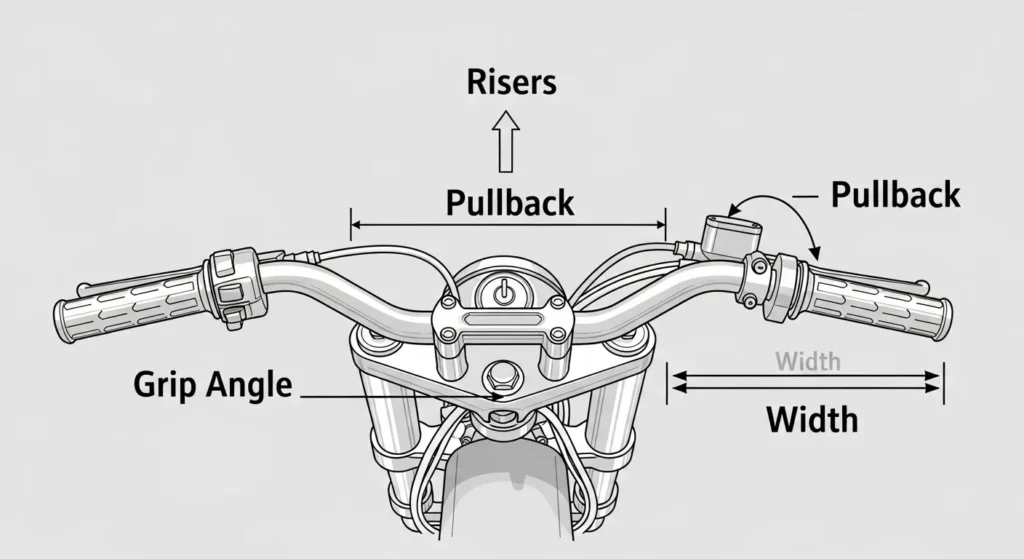
It is easy to fall into the trap of a huge engine or luggage racks, but riders who spend better part of a day in the saddle, hand position at the handlebar is directly related to the muscular condition and even responsiveness in an emergency situation.
The study conducted by Rider Safety Institute in 2023 found that those riders whose handlebar ergonomics are not optimal were more prone to developing shoulder discomfort and even wrist pain, as compared to riders with sound ergonomics, by 38 percent and in the first 90 minutes of touring at that.
Proper handlebar setup affects:
- Upper body posture
- Wrist neutral alignment
- Elbow relaxation angle
- Back and shoulder strain over time
In short, comfort equals endurance—and endurance equals safety.
Handlebar Components That Make a Difference
Every rider has a unique build and riding style, but a few adjustable components give you control over your bike’s fit:
- Handlebar Risers
- Make taller and lessen distance to bars.
- New and improved for riding on pegs during off-road sections (learn how to ride a dirt bike here).
- Rotatable Bars and Clamps
- Provides rotational tuning, to suit your watch position.
- Adjustable Levers
- Ensure the ability to reach to clutch and brake levers easily by your fingers.
- Vibration Dampening Grips
- Eliminate long-trip fatigue, particularly the wrist and thumb.
Touring Setup Example: BMW GS 1250 vs Honda Africa Twin
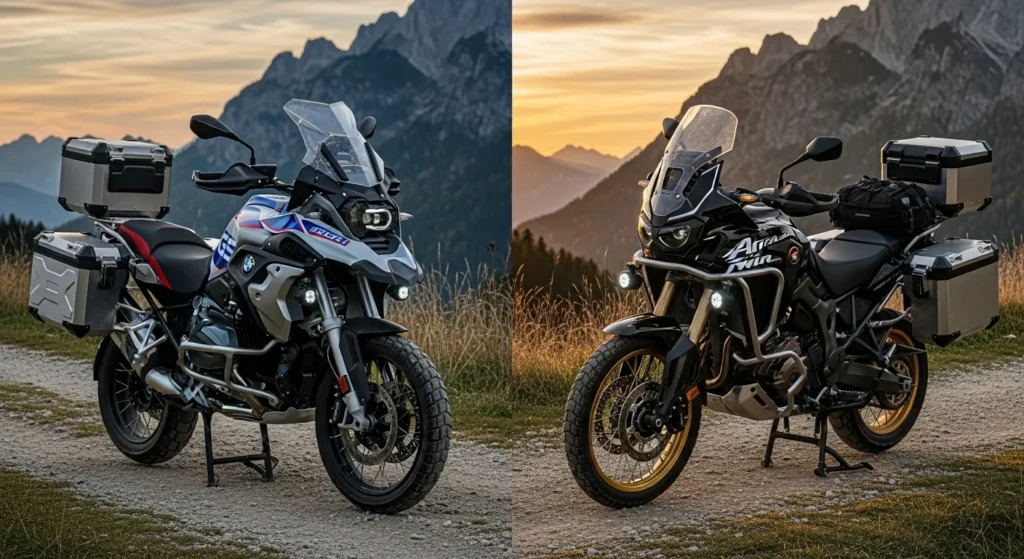
To compare real-life arrangements in two favourite touring giants we have on hand:
| Model | Rider Bar Adjustment | Rise/Reach Mods | Feedback |
|---|---|---|---|
| BMW GS 1250 | Adjustable risers + ProTaper EVO bars | +2” rise, 3” pullback | Improved standing control, wrist comfort |
| Africa Twin | OEM bars + Barkbusters + risers | +1.5” rise, 2” pullback | Better windscreen reach, smoother throttle input |
These upgrades aren’t just expensive gear for gear’s sake—they’re performance multipliers for your endurance and responsiveness.
💬 Expert Quote
Ergonomics of handlebars is either your life-forwarder or death-hunger when you spend 10 hours straight on the road. Minor adjustments in the position of my bar evolve terribly in my riding style- especially when I get fatigued.”
Bill Hodges, ADV Touring Instructor in MotoQuest
DIY Handlebar Adjustment Tips (Don’t Skip These)
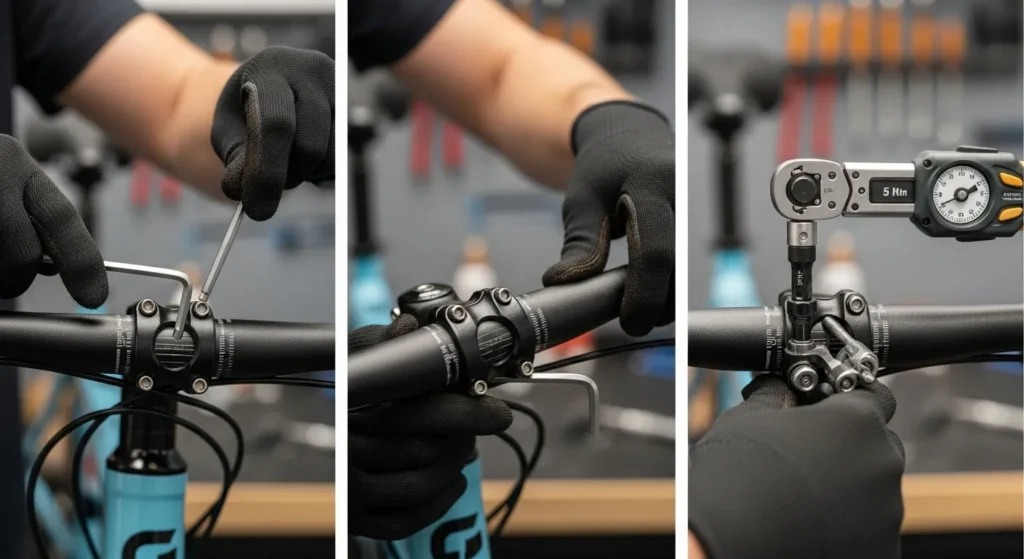
Here is a brief at-home quick guide for dialing in your handlebar fit:
- Sit ergonomically on the bike in gears to tour. Adjust the bars such that your arms are bent a little and relaxed.
- Maintain a neutral position in the wrists You should relax your hands and not extend them
- Test throttle backlash slotting Bars are not to hamper movement
- Be sure to check cable slack, to prevent stretching out brake/clutch lines.
And in case you consider installing LED lighting kits or powerbanks on your handlebar cluster, make sure that your new system will not interfere with the electrical harnesses (read this article on how to add lights to a dirt bike).
The Cost of Neglecting Ergonomics
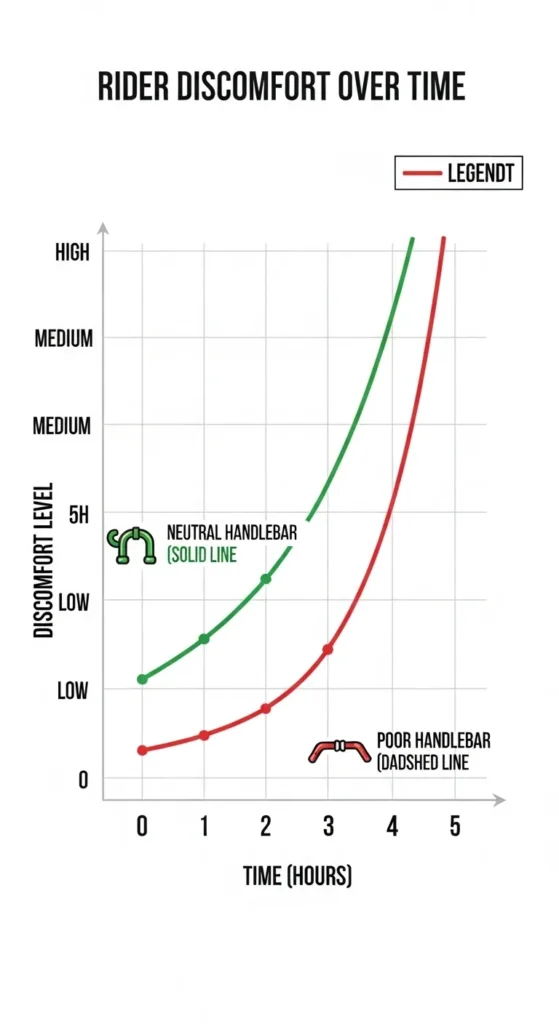
Long-term riders report:
- Carpal tunnel pain early onset
- Pinched nerves due to inappropriate angles of bars
- The herniation was lower back with the extended hyperextension even lower back
It is this reason that riders, who seek a rider-friendly performance and performance-friendly comfort balance, now view bar fitment as a necessary feature like air pressure or oil gauge.
Touring Riders & Custom Builds
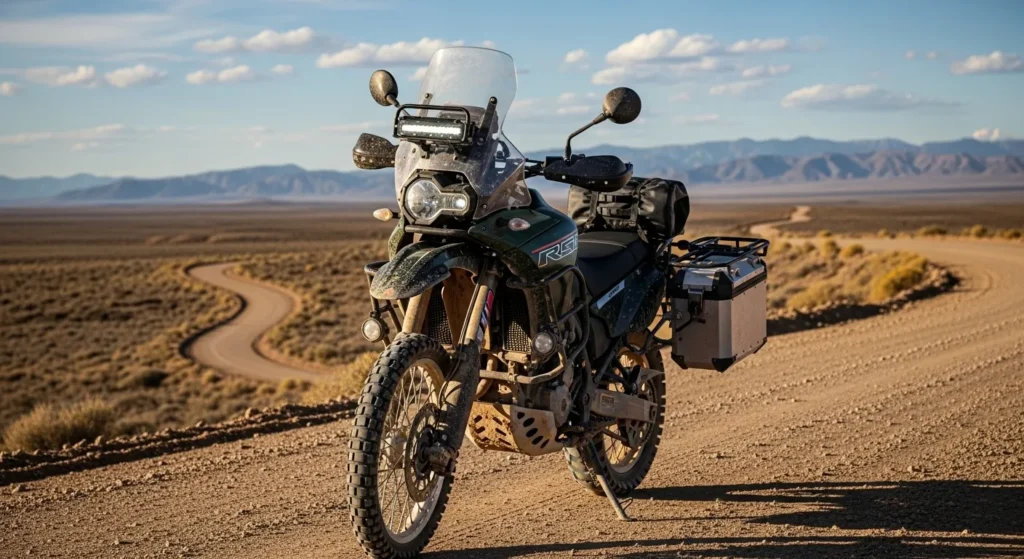
Regardless of whether you have a bike with all the bells and whistles available or one converted to touring yourself, handlebar changes are affordable and life altering. Converting dirt bikes to dual sporting first-order tasks should include handlebar modifications-and before loads or auxiliary fuel tanks are added.
To read more conversion tips, please consult our article entitled how to convert your dirt bike to dual-sport.
Conclusion: The Little Things That Go the Distance
Touring is more than numbers of horsepower and highway miles. It is a choice of resilience and the tiniest of mechanical limitations can be the largest determiner. Touring bicycles should have handlebars that can be adjusted in a unique way for each particular rider positioning, so that being caught out in the middle of nowhere will not take away the comfort of being on the bike on the day four, 820 miles away.
And ultimately, a bike ought to work for you as opposed to the other way round.
